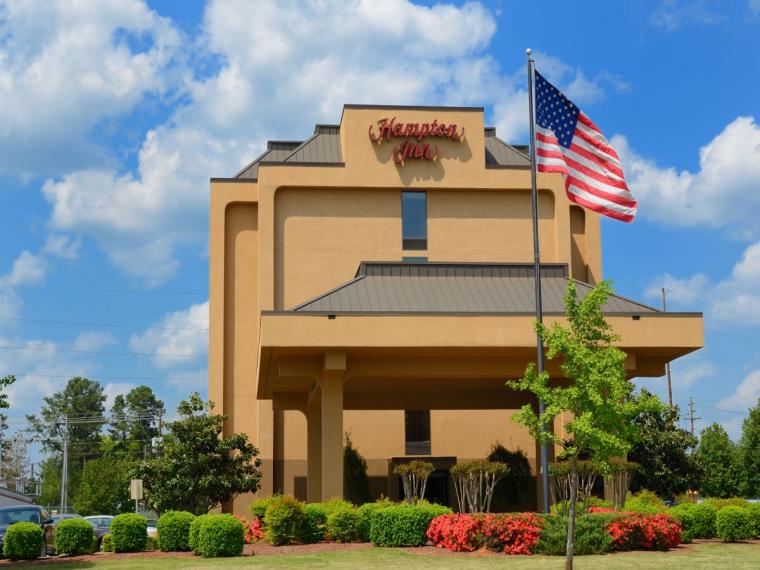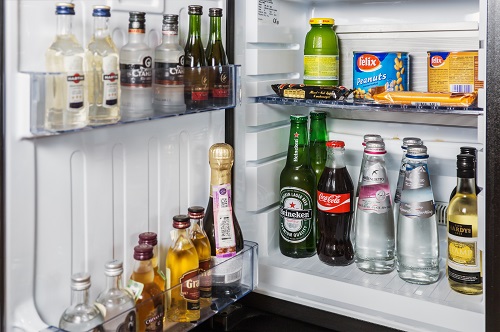

Sometimes, one trend can tell you a lot. Take minibars in hotel rooms, for example. You know what we’re talking about – the college dorm room-sized fridge that was filled with drinks and snacks, available to patrons upon check-in to their room.
The little fridges were a part of the hotel experience. But by late 2019, many hotel chains were pulling them out en masse. Now suddenly, they’re making a return. But why?
To answer that question, you first have to understand the forces at work – and there are many. When minibars first started being installed in hotel rooms in the mid- to late 1970s, they were heralded as the ultimate luxury. Having food and drinks already available in your room was viewed as a great amenity, particularly because it meant you could forego calling room service.
It was a great idea and for a while, was considered part of the travel experience, particularly at the luxury level. But over time, minibars declined in popularity, for a variety of reasons, all of which can be seen through the lens of the hospitality and travel industry.
Not the least of these reasons was the dramatic (and often laughable) markup on items stocked for guest use. Initially, it made money for hotels. Then, as guests caught on to the prices (usually upon looking at their bill during checkout), it began being viewed with hostility. Ultimately, it was fodder for jokes and even for prime-time comedy.
Reader’s Digest notes, “Who could forget the infamous scene in the Las Vegas episode of Friends where Rachel takes macadamia nuts from the minibar in Ross’s hotel room and spits them out without eating them, to get back at him for pranking her?”
But other factors came into play as well. Guests realized they could push aside some of the expensive contents of their fridge and use the space to store their own beverages or snacks, purchased more affordably in local stores. The fact that in many cases, hotels had soft drink and vending machines on each floor – with items costing far less than the ones in the fridge – also lowered the profit margin. Both trends not only defeated the purpose of the minibar, they took dollars away from in-house restaurants and bars, as well as in-room dining. Hotels were chagrinned to see their own amenities working against them.
Cvent says that year over year, the minibar ceased to be a profit center for hotel chains, pointing out statistics compiled by PKF Hospitality Research: In the U.S., revenue from minibars fell 28 percent from 2007 to 2012. And Reader’s Digest says that by 2017, a CBRE Hotels report found that minibars accounted for just 0.4 percent of the revenue generated by hotel food and beverage services.
Minibars were also labor-intensive. Housekeeping personnel had to check the interiors of the fridges each day and replace items used – and to make a note of them for billing purposes. Then there were the inevitable arguments upon checkout with guests claiming they had not used the minibar and that housekeeping had made a mistake. Oh, and let's not forget the guests who would drink the contents of the miniature bottles of vodka and other clear alcoholic beverages, and then replace them with water.
Hotels tried to keep up, writes Priceonomics. Enterprising companies, like eRoomSystem Technologies, began convincing hotels to put in state-of-the-art beverage safes that automatically charge guests using a system of infrared sensors. The minibar, wrote The Atlantic, had morphed into "a supermax prison for sodas and candy."
But more often than not, the little refrigerators were just a big headache.
At the same time, people stopped wanting to stay in their hotel rooms following a day of travel, sports or meetings. Cvent says that as a result, hotel bars and lounges saw a 4.9 percent jump in revenue. But another trend subsequently emerged: as group travel (including youth sports tournaments) became a driving force in the marketplace, guests wanted to explore local restaurants and to immerse themselves in the cities they were visiting and would eschew the hotel’s offerings in favor of a night out.
Cities that wanted to capitalize on economic impact for more local businesses were only too happy to provide lists of restaurants and bars. Sports commissions and CVBs were able to offer information, discount coupons and other amenities in welcome packets, something that further enticed people to explore outside of their hotels.
What else happened? Well, to put it in two words: the Internet. And while the Internet didn’t kill minibars, per se, its rise contributed to a need for hotel room renovations to accommodate the changing technology by adding more power outlets and USB ports as well as enhanced hotel-wide Wi-Fi. During those renovations (which also included updating bathrooms and changing décor), hotel chains pulled out the fridges – viewing them as more liability than asset.
Many hotel chains also began installing on-premises convenience stores where guests could purchase soft drinks, light fare and bagged snacks, creating a profit center to replace the minibar (although prices of items were not nearly so high in such establishments). And those were a runaway hit with guests, who liked grabbing food on the go.
Cvent notes, “Hotels found that guests prefer purchasing drinks and snacks in a small shop near the lobby, or from a nearby 24-hour convenience store. According to the Association for Convenience & Fuel Retailing, the number of convenience stores increased to a record 149,220 in 2012, up 0.7% from the previous year.”
All things considered, the minibar was becoming an endangered species. The only places they remained prevalent were suite-style hotels (which sometimes had a kitchenette area) and budget-priced accommodations. Even then, fridges were simply offered as an in-room amenity but were not kept stocked with salable products. It kept room prices low for travelers and was integral to marketing campaigns like Holiday Inn’s “The Best Surprise is No Surprise.”
It might have gone on like this forever, with the minibar passing into the realm of the anecdotal. But then 2020 hit. By the time travel picked up again, much had changed. Hotels wanted to make it easier for guests to stay in their rooms if they chose. Many chains had yet to reintroduce in-room dining and breakfast bars, and housekeeping services were being kept to a minimum.
Suddenly, the minibar’s time had come – again. Hotel Online, a business-to-business news source in the hospitality industry, noted that several hotels are now indicating up to three times the minibar revenue generated per guestroom when compared to pre-2020 numbers.
And once again, technology is a factor, only this time, it is driving the return in a big way. A minibar company, BarTech, noted it has developed multiple ways to track in-room use of minibar contents and other products. One is an app that allows guests to check the prices of items, and to record their consumption without the need for staff to enter individual guestrooms). Enhanced technology can, at least theoretically, restore the minibar’s status as a profit center.
Another element in the comeback is more low-tech and is also one of the reasons minibars skyrocketed in popularity in the first place: convenience. As youth sports trend up again, the ability to keep snacks and drinks on hand is desirable, particularly since many airlines have not restored beverage and food services, more families are traveling by car and many restaurants are operating with less staffing or more limited hours. And as more sports tournaments recommend athletes carry their own water bottles, those athletes are using more sophisticated containers that have the ability to keep beverages cooler longer – provided they can be refrigerated at night.
The jury is still out on whether the prices of items in hotel minibars will actually be more affordable this time around (and thus not lead to more sitcom fodder). But with people able to give real-time reviews on hotels on travel websites, as well as to complain on social media and tag hotels while doing so, the drawbacks of significantly marked-up goods could outweigh any potential profit hotels will see – and could force a reckoning when it comes to the price of a can of Coke.

